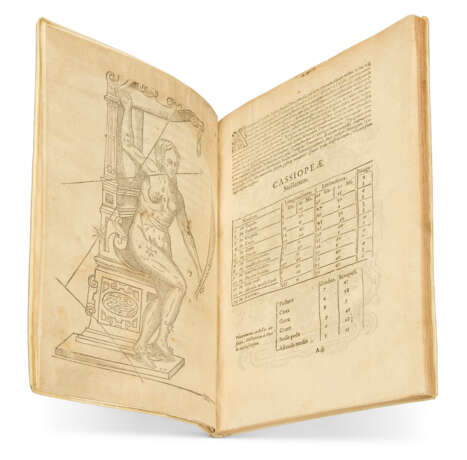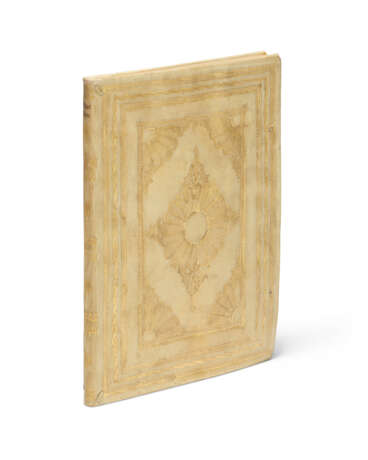ID 1360794
Lot 78 | Alae seu scalae mathematicae
Estimate value
$ 12 000 – 18 000
First edition, in which Digges attempts to determine the parallax of the 1572 supernova and argues against the Aristotelian view of a static universe. This work was prompted by the supernova of 1572 in the constellation Cassiopeia (thought at the time to be a new star), a phenomenon which astounded Europe and became the subject of an outpouring of astronomical and astrological work. "Addressed to a European audience of astronomers, Alae was Digges's only Latin publication and offered an analysis and improvement of the mathematical and instrumental techniques available for the study of the new star. Recent radio astronomy has shown that Digges's observations were the most accurate then made. Moreover, he concluded that the new star was indeed a celestial body rather than a meteorological phenomenon, thus challenging the interpretations offered by contemporary Aristotelian natural philosophy. Digges's cosmological ambitions went beyond his claims concerning the new star. In Alae he condemned the 'monstrous' planetary astronomy of Ptolemy and wrote approvingly of Copernicus (Alae, sigs. A4v, 2A3r, 2A4v, L2v). But he did not wholeheartedly endorse the Copernican heliocentric system, in which the sun rather than the earth is stationed at the centre of the universe. Writing only shortly after the appearance of the new star, Digges initially hoped that its changing brightness might provide concrete observational evidence to support or modify the Copernican doctrine" (DNB). Houzeau and Lancaster 2694; STC 6871.
Quarto (201 x 145mm). Full-page woodcut on verso of title, depicting the constellation of Cassiopeia, full-page woodcut of Lord Burghley’s arms on A2r and Digges’s arms on final leaf, woodcut diagrams (title-page a little soiled and with two small ink-burns visible on verso, intermittent dampstain to fore-margin). 18th-century vellum elaborately gilt (neatly recased with later endpapers, ties lacking). Provenance: erased ownership inscriptions on title – Walter Ashburner (1864-1936; partially erased inkstamp on title) – Owen Gingerich (bookplate).
| Place of origin: | England |
|---|---|
| Auction house category: | Printed books |
| Place of origin: | England |
|---|---|
| Auction house category: | Printed books |
| Address of auction |
CHRISTIE'S 20 Rockefeller Plaza 10020 New York USA | ||||||||||||||
|---|---|---|---|---|---|---|---|---|---|---|---|---|---|---|---|
| Preview |
| ||||||||||||||
| Phone | +1 212 636 2000 | ||||||||||||||
| Fax | +1 212 636 4930 | ||||||||||||||
| Conditions of purchase | Conditions of purchase | ||||||||||||||
| Shipping |
Postal service Courier service pickup by yourself | ||||||||||||||
| Payment methods |
Wire Transfer | ||||||||||||||
| Business hours | Business hours
|




